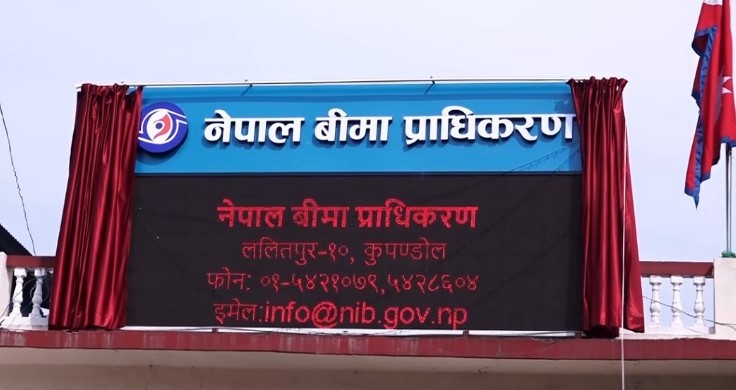Nepal Insurance Authority Amends Reinsurance Directive 2080 with Key Regulatory Changes

Kathmandu — The Nepal Insurance Authority has formally amended the Reinsurance Directive 2080, introducing several significant changes aimed at strengthening the regulatory framework for both life and non-life insurers operating in the country. Although the amendment was made on Shrawan 8, the Authority released the revised directive to the public only a week later.
According to the Authority, the amendments were made to ensure a more structured approach to reinsurance practices in line with Section 166 of the Insurance Act, 2079. The revised directive mandates the formation of a reinsurance sub-committee chaired by the Authority itself, with the inclusion of technical experts and representatives from the insurance industry. This committee will play an advisory role and provide regular assessments of the reinsurance landscape in Nepal.
One of the key revisions prevents domestic reinsurers from rejecting the direct share of reinsurance allocated by insurance companies, as determined by the Authority. Further, insurers are required to provide at least 30 percent of the remaining reinsurance share—after assigning the direct portion under treaty arrangements—to domestic reinsurers, reinforcing the domestic capacity for risk absorption.
The amendment also introduces a provision requiring 100 percent domestic reinsurance for several classes of insurance, including life, motor, agriculture, livestock, herbs, riot and terrorism insurance, and various other types—excluding travel, trekking, and health insurance. Domestic reinsurers are not allowed to refuse such assignments, making the domestic market the primary destination for these risks.
In the case of facultative reinsurance, the revised directive specifies that insurance companies may enter into internal facultative reinsurance arrangements with other domestic insurers. However, an insurer is prohibited from issuing any policy without first obtaining reinsurance confirmation from the reinsurer, tightening procedural compliance.
A notable inclusion addresses insurance coverage for foreign-based assets of Nepali citizens. Insurers licensed by the Authority may provide coverage for such assets from within Nepal. In the event of a claim, settlement must be made in Nepali currency and within Nepal, ensuring regulatory jurisdiction over cross-border risks.
To promote risk diversification, the Authority has introduced strict limits on reinsurance concentration. Non-life insurers may not reinsure more than 60 percent of their total or per-portfolio risk with a single reinsurer. Additionally, lead reinsurers are restricted to a maximum of 40 percent of the total reinsurance share, while each participating reinsurer (followers) is limited to a maximum of 20 percent. However, these restrictions do not apply to life insurance or to domestic reinsurers under certain conditions.
An exemption exists for reinsurers with ratings equivalent to the lead reinsurer, allowing them to be treated as leaders for reinsurance allocation purposes. Moreover, special risks such as catastrophe, certain foreign travel, clinical trials, and health-related coverage may be reinsured with a single reinsurer, subject to approval from the Authority.
The directive now also requires insurers to submit certified copies of their reinsurance treaties—such as signed slips or cover notes—within 60 days of treaty effectiveness. This provision excludes facultative reinsurance. Furthermore, all types of reinsurance arrangements must be included in insurers’ internal audit processes and reflected in the audit reports.
Insurers may now apply to form collective insurance funds, or reinsurance pools, for specific risks or portfolios. Upon assessment, the Authority may approve such pools or initiate them independently. The operation and management of these pools will follow guidelines set by the Authority.
In an effort to enhance institutional capacity, insurers are required to appoint qualified personnel in their reinsurance departments and implement structured training and capacity-building programs. The directive also establishes a reporting obligation, requiring insurers to submit quarterly reinsurance data in a prescribed format within 15 days of each quarter’s end via the Authority’s reporting system.
